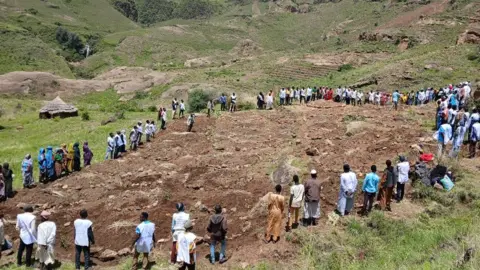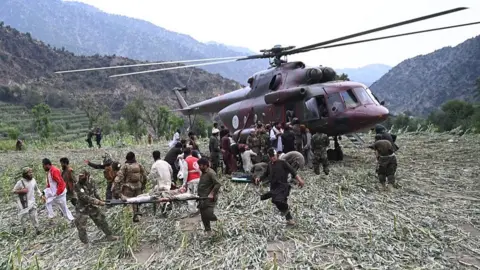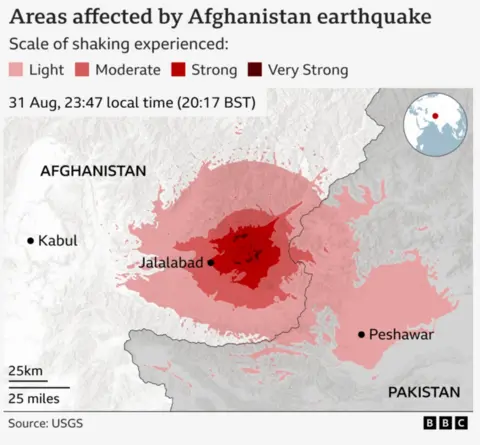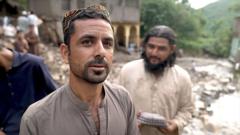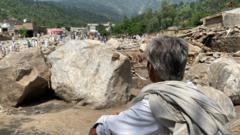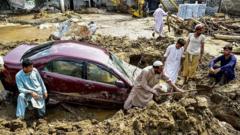In an area often busy with student life, the impact of the crash reverberated throughout the 12-acre campus of Milestone School and College. Eyewitnesses, such as 18-year-old Ahnaf Bin Hasan, recalled the moment of impact. "It was like 30 or 40 thunderbolts falling from the sky," he said, still shaken two days after the event. Many students had already begun their day, either waiting to be picked up or going for after-school classes.
Witnesses reported that the aircraft had been on a training flight and suffered mechanical failure shortly after takeoff. The pilot was able to eject before the crash and was hospitalized, but tragically, the event resulted in an unprecedented loss of life, with reports indicating the majority of the deceased were under 12 years old.
As flames engulfed the school, Ahnaf took immediate action, running toward the burning wreckage to rescue fellow students. Despite sustaining injuries himself, he, alongside others, navigated the chaos to help evacuate students and manage the overwhelming scene until emergency services arrived.
The heart-wrenching stories continued to emerge. Wakia Firdous Nidhi, an 11-year-old student, was among those who lost their lives. Her family faced a night of agony searching hospitals and waiting for confirmation of her death. In the aftermath, not only did families navigate grief, but they also encountered bureaucratic hurdles when seeking to recover their loved ones' remains.
The school's staff and parents expressed profound grief and confusion in the wake of the incident. Many called for transparency regarding the accident, suspecting cover-ups amid government numbers fluctuating. Inevitably, the community was left reeling from not just the loss, but the haunting memories that will remain for years to come.
The aftermath of this tragedy serves as a stark reminder of the fragility of life, as the community grapples with the emotional scars left behind. Survivors like Ahnaf assert their struggle to find normalcy amid the trauma, symbolizing a collective cry for acknowledgment and healing after an unthinkable event.
In witnessing the heroism of individuals that day and the sheer impact of the loss, Bangladesh stands at a pivotal moment, confronting the harsh realities of aviation safety near populated areas and the devastating consequences of such failures.
As the investigation unfolds, the echoes of this tragic incident implore a call for accountability, compassion, and enduring support for a community in mourning.
Witnesses reported that the aircraft had been on a training flight and suffered mechanical failure shortly after takeoff. The pilot was able to eject before the crash and was hospitalized, but tragically, the event resulted in an unprecedented loss of life, with reports indicating the majority of the deceased were under 12 years old.
As flames engulfed the school, Ahnaf took immediate action, running toward the burning wreckage to rescue fellow students. Despite sustaining injuries himself, he, alongside others, navigated the chaos to help evacuate students and manage the overwhelming scene until emergency services arrived.
The heart-wrenching stories continued to emerge. Wakia Firdous Nidhi, an 11-year-old student, was among those who lost their lives. Her family faced a night of agony searching hospitals and waiting for confirmation of her death. In the aftermath, not only did families navigate grief, but they also encountered bureaucratic hurdles when seeking to recover their loved ones' remains.
The school's staff and parents expressed profound grief and confusion in the wake of the incident. Many called for transparency regarding the accident, suspecting cover-ups amid government numbers fluctuating. Inevitably, the community was left reeling from not just the loss, but the haunting memories that will remain for years to come.
The aftermath of this tragedy serves as a stark reminder of the fragility of life, as the community grapples with the emotional scars left behind. Survivors like Ahnaf assert their struggle to find normalcy amid the trauma, symbolizing a collective cry for acknowledgment and healing after an unthinkable event.
In witnessing the heroism of individuals that day and the sheer impact of the loss, Bangladesh stands at a pivotal moment, confronting the harsh realities of aviation safety near populated areas and the devastating consequences of such failures.
As the investigation unfolds, the echoes of this tragic incident implore a call for accountability, compassion, and enduring support for a community in mourning.








